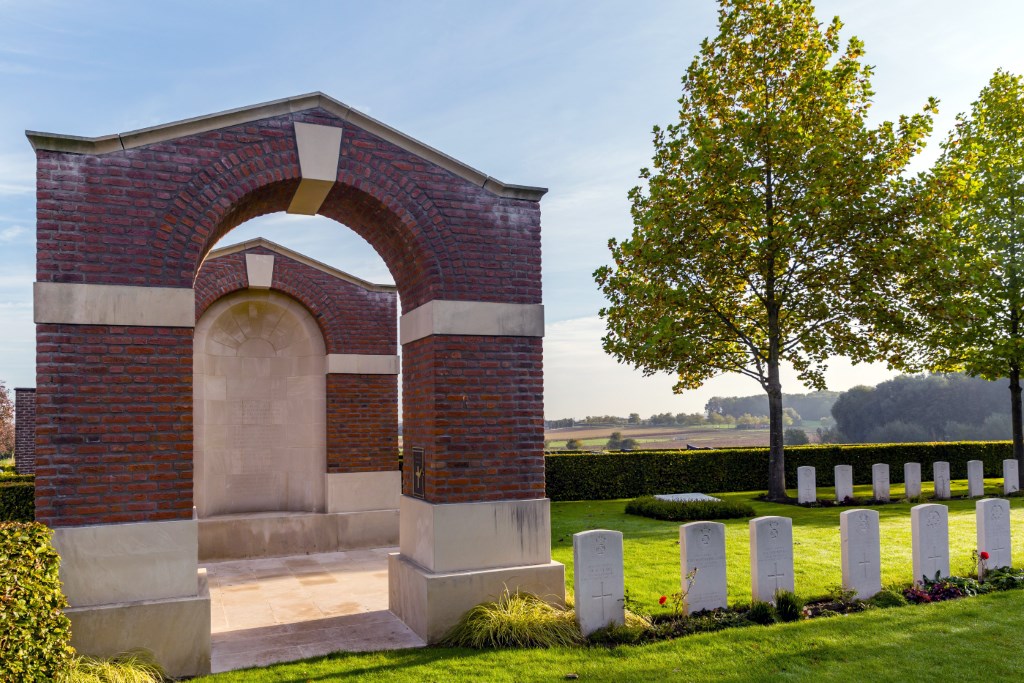Kemmel Chateau Military Cemetery
- Country Belgium
- Total identified casualties 1137 Find these casualties
- Region West-Vlaanderen
- Identified casualties from First & Second World War
- GPS Coordinates Latitude: 50.78667, Longitude: 2.82892
PLEASE NOTE
Damage due to high winds has now been repaired, however a new headstone for Private Lionel Percival Cross has been ordered and his resting place is temporarily marked.
PLEASE NOTE
The site maybe difficult to access or inaccessible due to flooding. Please be aware the ground is also waterlogged.
Location information
Kemmel Chateau Military Cemetery is located 8 Kms south of Ieper on a road leading from the Kemmelseweg (N331), connecting Ieper to Kemmel. From Ieper town centre the Kemmelseweg is reached via the Rijselsestraat, through the Lille Gate (Rijselpoort) and straight on towards Armentieres (N336). 900 metres after the crossroads is the right hand turning onto the Kemmelseweg (made prominent by a railway level crossing). On reaching the village of Kemmel the first right hand turning leads onto the Reningelststraat. 600 metres along the Reningelststraat lies the right hand turning onto Nieuwstraat. 500 metres along the Nieuwstraat on the right hand side of the road lies the cemetery.
Visiting information
Wheelchair access possible via main entrance. For further information regarding wheelchair access, please contact our Enquiries Section on telephone number 01628 507200.
History information
Kemmel Chateau was north-east of Kemmel village and the cemetery was established on the north side of the chateau grounds in December 1914. It continued to be used by divisions fighting on the southern sectors of the Belgian front until March 1918, when after fierce fighting involving both Commonwealth and French forces, the village and cemetery fell into German hands in late April. The cemetery was retaken later in the year, but in the interval it was badly shelled and the old chateau destroyed. There are now 1,135 Commonwealth burials of the First World War in the cemetery and 21 from the Second World War (which all date from the Allied withdrawal ahead of the German advance of May 1940). The cemetery was designed by Sir Edwin Lutyens.



